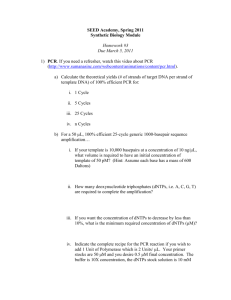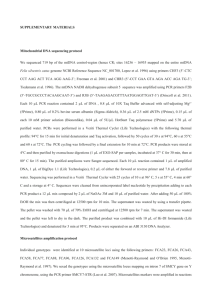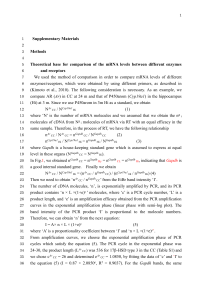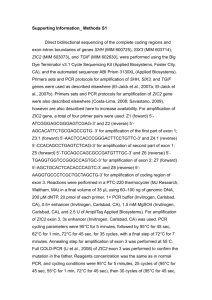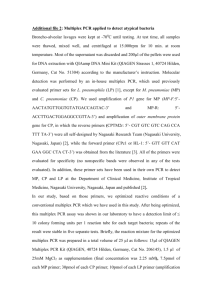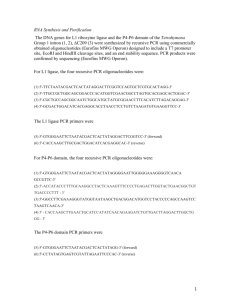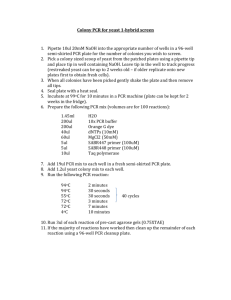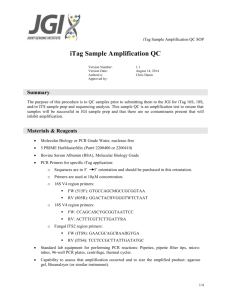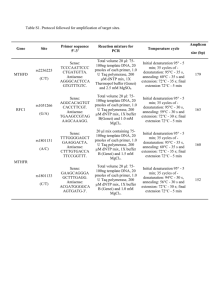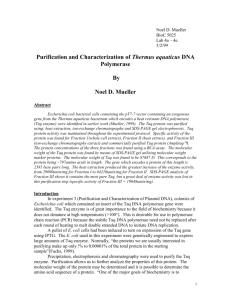Protocol S1 DNA extraction, amplification and sequencing Tissues
advertisement
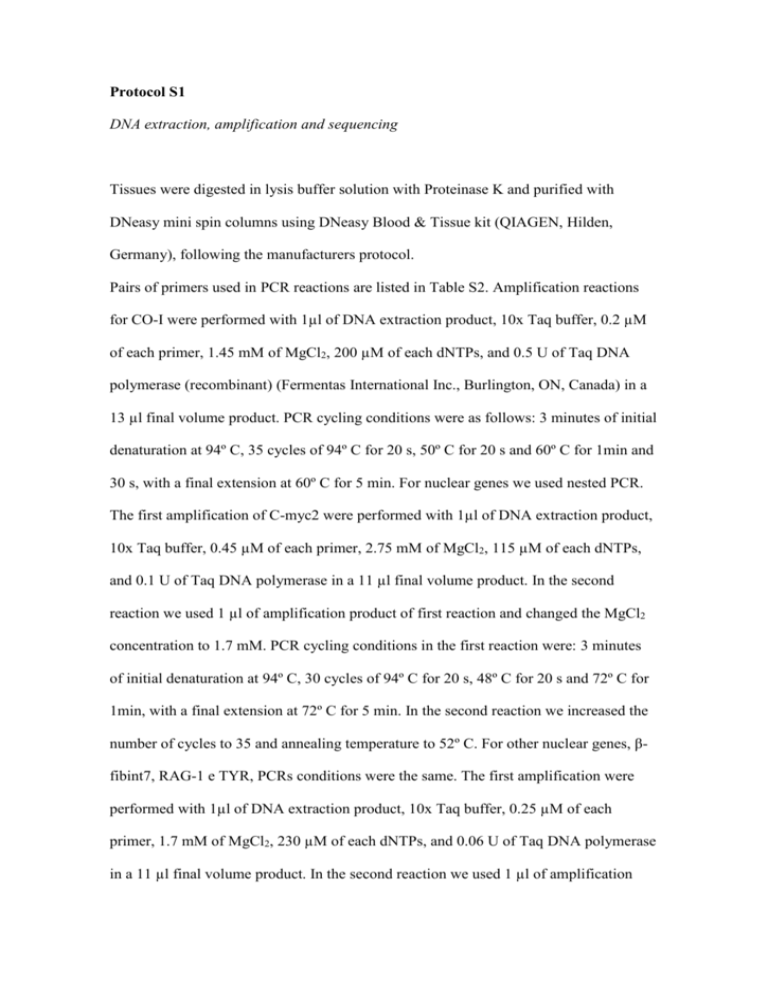
Protocol S1 DNA extraction, amplification and sequencing Tissues were digested in lysis buffer solution with Proteinase K and purified with DNeasy mini spin columns using DNeasy Blood & Tissue kit (QIAGEN, Hilden, Germany), following the manufacturers protocol. Pairs of primers used in PCR reactions are listed in Table S2. Amplification reactions for CO-I were performed with 1µl of DNA extraction product, 10x Taq buffer, 0.2 µM of each primer, 1.45 mM of MgCl2, 200 µM of each dNTPs, and 0.5 U of Taq DNA polymerase (recombinant) (Fermentas International Inc., Burlington, ON, Canada) in a 13 µl final volume product. PCR cycling conditions were as follows: 3 minutes of initial denaturation at 94º C, 35 cycles of 94º C for 20 s, 50º C for 20 s and 60º C for 1min and 30 s, with a final extension at 60º C for 5 min. For nuclear genes we used nested PCR. The first amplification of C-myc2 were performed with 1µl of DNA extraction product, 10x Taq buffer, 0.45 µM of each primer, 2.75 mM of MgCl2, 115 µM of each dNTPs, and 0.1 U of Taq DNA polymerase in a 11 µl final volume product. In the second reaction we used 1 µl of amplification product of first reaction and changed the MgCl2 concentration to 1.7 mM. PCR cycling conditions in the first reaction were: 3 minutes of initial denaturation at 94º C, 30 cycles of 94º C for 20 s, 48º C for 20 s and 72º C for 1min, with a final extension at 72º C for 5 min. In the second reaction we increased the number of cycles to 35 and annealing temperature to 52º C. For other nuclear genes, βfibint7, RAG-1 e TYR, PCRs conditions were the same. The first amplification were performed with 1µl of DNA extraction product, 10x Taq buffer, 0.25 µM of each primer, 1.7 mM of MgCl2, 230 µM of each dNTPs, and 0.06 U of Taq DNA polymerase in a 11 µl final volume product. In the second reaction we used 1 µl of amplification product of first reaction and kept the same reagents concentration. PCR cycling conditions in the first reaction were: 3 minutes of initial denaturation at 94º C, 20 cycles of 94º C for 20 s, 50º C for 20 s and 72º C for 1min and 30s, with a final extension at 72º C for 5 min. For the second reaction we increased the annealing temperature to 52º and the number of cycles to 35. PCR products were purified in a 0,3 µl ExoI, 0,6 µl FasAP solution (Fermentas International Inc., Burlington, ON, Canada) and 1,1 µl of ultrapure water, reacting at 37º C for 30 min and 95º C for 10 min. Sequencing reactions were performed as follow: 2 µl of Save Money buffer (200 mM Tris–HCl, pH 9.0; 5 mM MgCl), 0,4 µl of Big Dye v.3.1. (Applied Biosystems, USA), 0,32 µl of primers (10pmol/ µl), 5-20ng of PCR product, and 10 µl of water ultrapure. PCR thermal conditions were: 95º C for 1 min, followed by 29 cycles of 95º C for 20 s, 50º C for 20 s, and 60ºC for 4 min. Samples were read in an ABI3500 sequencer (Applied Biosystems, USA).
